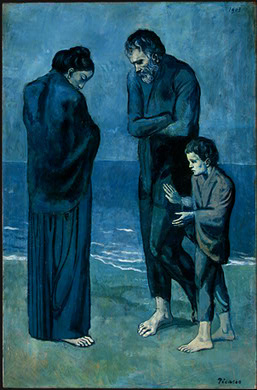
The life of Pablo Picasso
Pablo Ruiz Picasso was
born on October 25, 1881 in Malaga, Spain to José Ruiz y Blasco
and María Picasso y López. Who better to father him than
an art teacher?
Luckily, his father recognized the amazing talent of little Picasso. At age 14, Picasso entered the Barcelona Fine Arts school, passing the examines with flying colors. Picasso attended many art schools but never finished his college career. But that didn’t stop the aspiring artist. Eventually, Picasso moved to France - which at the time was the Disney World of art.
Through out his life, Picasso produced thousands of works of art of all types of media such as oil paints, sculptures, and cut-outs. He was known for having close friendships with other of his contemporary painters like George Braque and Henri Matisse. Picasso also kept a few mistresses along with a wife. In 1961, Picasso finally settled down with his last wife Jacqueline Rogue.
Pablo Ruiz Picasso died on April 8, 1973.
Picasso’s art work is categorized into “periods” or a set of years that his art followed a specific style.
Luckily, his father recognized the amazing talent of little Picasso. At age 14, Picasso entered the Barcelona Fine Arts school, passing the examines with flying colors. Picasso attended many art schools but never finished his college career. But that didn’t stop the aspiring artist. Eventually, Picasso moved to France - which at the time was the Disney World of art.
Through out his life, Picasso produced thousands of works of art of all types of media such as oil paints, sculptures, and cut-outs. He was known for having close friendships with other of his contemporary painters like George Braque and Henri Matisse. Picasso also kept a few mistresses along with a wife. In 1961, Picasso finally settled down with his last wife Jacqueline Rogue.
Pablo Ruiz Picasso died on April 8, 1973.
The
Art of Pablo Picasso
Picasso’s art work is categorized into “periods” or a set of years that his art followed a specific style.
- Blue Period: 1901 - 1904
His
paintings are dinted in a blue and grayish color as though very sad
or depressed. At this point, a close friend of Picasso’s had committed
suicide. Picasso’s sorrow for his friend’s death is shown in his
paintings. The people (more appropriately called “figures”) are
elongated with exaggerated long fingers, necks, legs, etc.
- Rose Period: 1905 - 1907
At
this time, Picasso’s art starts to become more cheery and warm.
Instead of the cold blues, Picasso’s paintings are done in warm colors
such as rose, oranges, and other bright colors. A common motif (theme)
of his paintings is a harlequin in checkered clothing which is similar
to jester or clown.
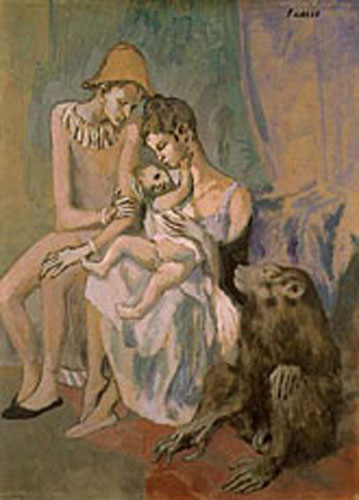 |
 |
- Analytical Cubism: 1909 - 1912
At
this period, Picasso started to look at the world in a different
perspective. When painting, he simplified his subjects into geometric
shapes. Instead of drawing a three dimensional object, Picasso
flattened the object (like how the world map is flat in text books).
Although these shapes seem flat, Picasso left some shading on the
individual shapes to help give them some dimension. Most of his
Analytical Cubist paintings are done in a brown or earth-color monotone
(one color).
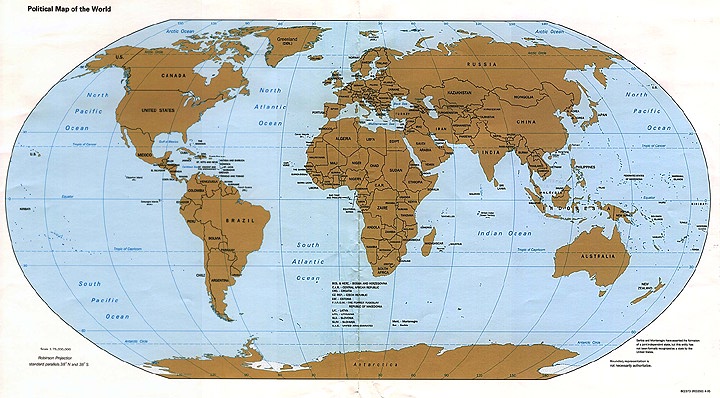 |
 |
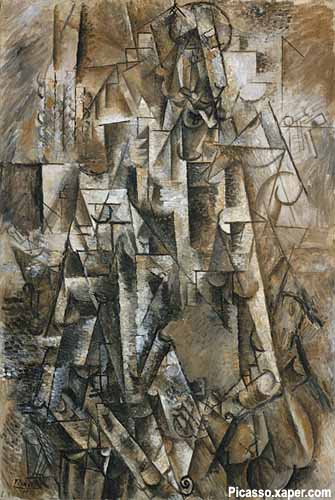 |
- Synthetic Cubism: 1912 - 1919
The
paintings from Picasso’s Synthetic Cubism period are various
collages of objects painted in a very simplified perspective. For
aesthetics (beauty) enhancement, Picasso added brighter colors to his
paintings.
In
the later years of Picasso’s life, we start to see the type of
stylizing that Picasso is perhaps most famous for. He takes the
three-dimensional form of the face and simplifies to both a profile and
portrait shot of the head. This type are painting made a brief
appearance with Picasso’s Les Demoiselles d’Avignon in 1907.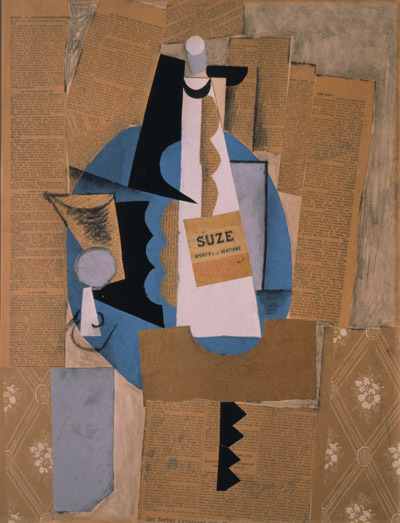 |
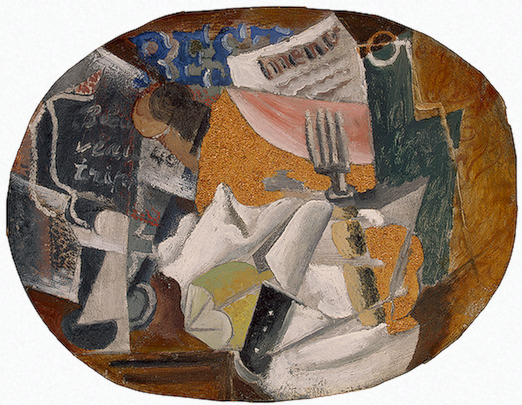 |




